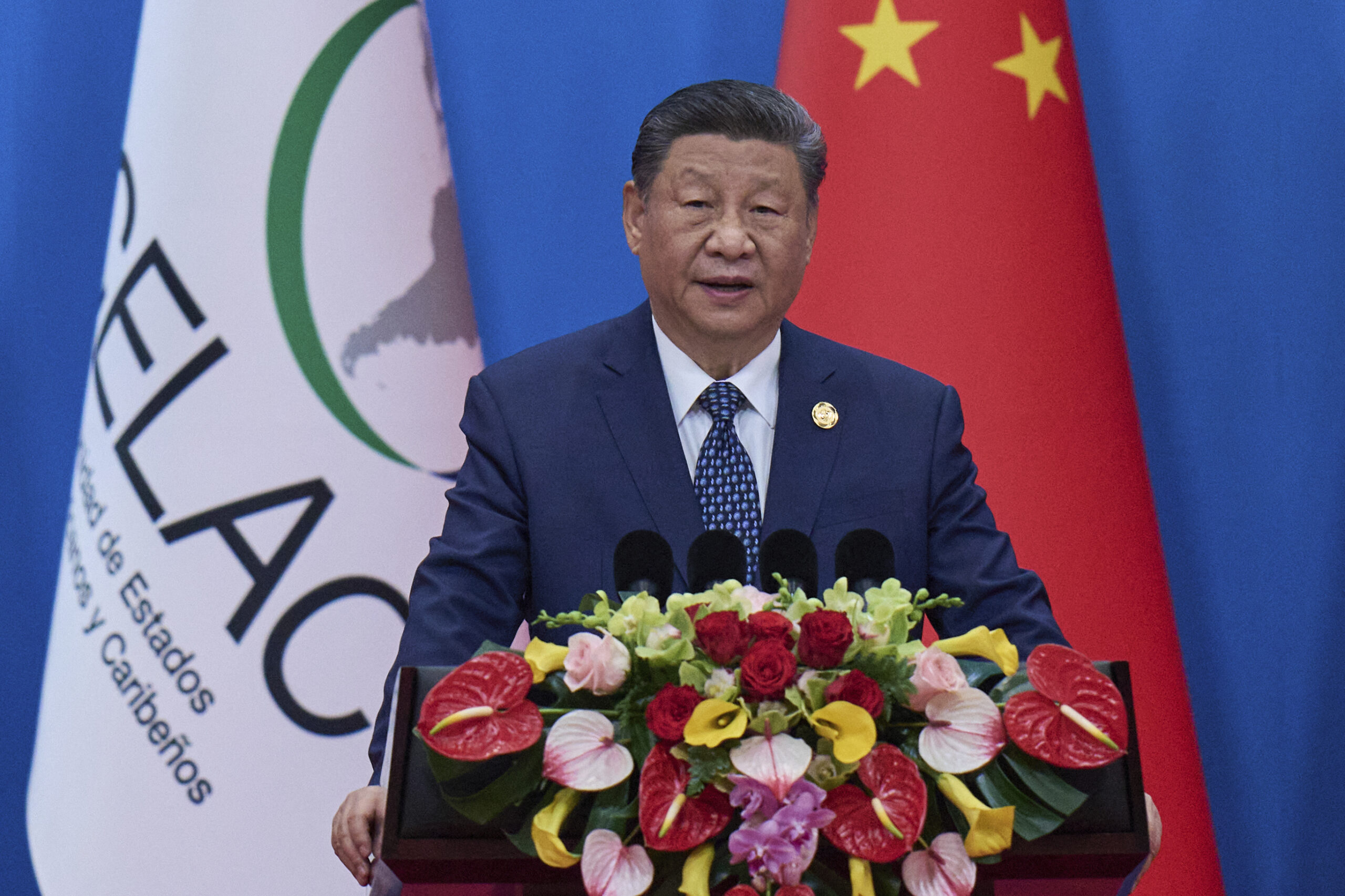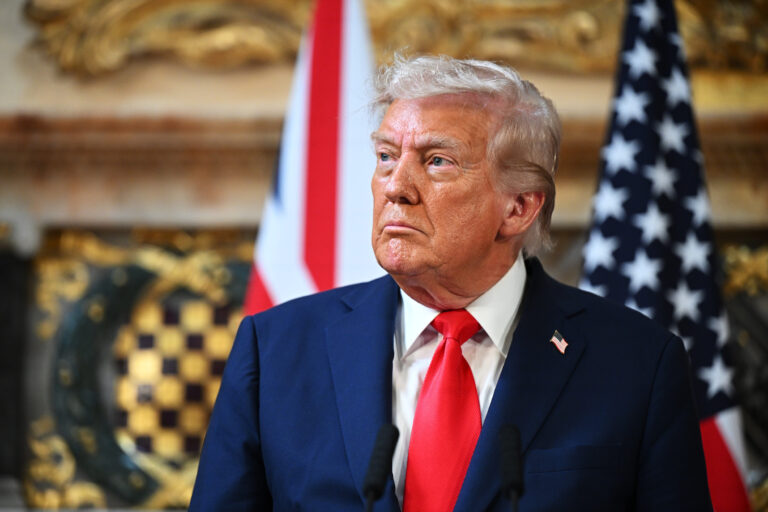
Chinese state media has hailed their government’s “resolute posture” as the reason behind the deal to walk back China’s trade war with the United States.
The framing is part of a familiar narrative since President Donald Trump hiked tariffs in a bid to shrink the U.S.’s $300 billion trade deficit with China, which has framed itself as a responsible player pushing back against Washington’s “bullying.”
Why It Matters
The agreement, hammered out in Geneva, Switzerland, over the weekend, was negotiated by delegations led by U.S. Treasury Secretary Scott Bessent and Chinese Vice Premier He Lifeng. The U.S. is effectively lowering overall tariffs to 30 percent for 90 days—including a 10-percent baseline rate plus an earlier 20 percent rate imposed over China’s role as a major source of fentanyl precursors.
China has likewise committed to 10-percent tariff on U.S. goods for a 90-day window and to suspending or ending other countermeasures. The temporary truce pulls the world’s two largest economies back from the brink after trade between them nearly ground to a halt, raising recession risks in the U.S. and deepening deflationary pressures in China.
Newsweek reached out to China’s Foreign Ministry by email with a request for comment.

Andy Wong/Associated Press
What To Know
The terms of the deal reflect the effectiveness of China’s response to Trump’s tariff escalations. They mark the end of what Beijing has called U.S. “discriminatory measures” against Chinese trade, according to Yuyuan Tantian, a social-media account affiliated with China’s state broadcaster CCTV, in an article published Monday on the Chinese platform Weibo.
“This shows that China’s firm countermeasures and resolute posture had a strong impact, and that these actions indeed caused significant pressure on the U.S. side—leading the American government to lower tariffs back down to the base level,” Song Guoyou, executive director of the Asia-Pacific Cooperation and Governance Research Center at Shanghai’s Fudan University, was quoted as saying.
The interim deal marks a major de-escalation in a trade conflict that disrupted global supply chains and rattled markets. The tariff on Chinese imports is also well below the 80 percent rate Trump said on Friday “seems right.”
Under the terms of the agreement, a 24-percent “ad valorem” duty on a range of Chinese goods will be suspended for 90 days, with so-called “reciprocal tariffs” imposed via executive order to be canceled.
That brings overall U.S. tariffs on China—its third-largest trading partner—down by at least 115 percent. China’s retaliatory tariffs had reached 125 percent, in addition to curbs on exports of rare earth elements.
China holds a near-monopoly on the refining of these critical minerals, which are essential to a range of defense and civilian technologies that Washington considers vital to national security.
What People Are Saying
Wayne Winegarden, senior fellow of business and economics at the California-based Pacific Research Institute think tank, told Newsweek: “The disruption to the U.S. economy has harmed businesses and families, and it is unclear what was achieved. The trade war has not been resolved, and the U.S. economy will be hit hard if the 30 percent tariffs stay in place—specifically, a reduction in consumer affordability and a negative impact on jobs and economic activity.
Hu Xijin, former editor of Chinese state tabloid Global Times, wrote on Weibo: “This is a huge victory for China’s firm adherence to the principles of equality and mutual respect [ …]
“China reaching an equal-footing agreement with the U.S. is not only a win for China, but also a victory for international trade norms and the proper global order.
This agreement sets an example and benchmark that could inspire other countries to assert themselves more confidently in defending their interests.”
Xi Jinping, Chinese president, told Latin American and Caribbean officials Tuesday during a Beijing summit: “Tariff wars and trade wars produce no winners. Bullying and coercion only lead to isolation.”
What Happens Next
It remains to be seen how negotiations will unfold during the 90-day cooling-off period and whether the Trump administration can significantly narrow the nearly $300 billion trade deficit with China—a long-standing concern for the president.




